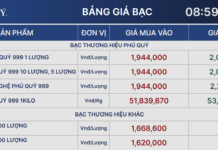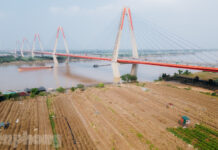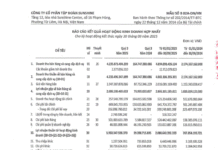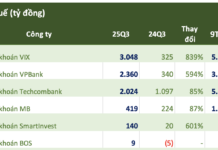The Longest Sea Overpass in Vietnam
Tan Vu – Lach Huyen Sea Overpass, also known as Tan Vu – Lach Huyen Car Road (Hai Phong City), was approved by the Ministry of Transport on October 29, 2010, and opened to traffic on September 4, 2017.
The project has a total investment of nearly 11,850 billion VND, funded by ODA loans from Japan and Vietnam Government’s matching funds. With a total length of 15.63 km, including a 5.44 km sea overpass, Tan Vu – Lach Huyen Bridge has become the longest sea overpass in Vietnam and one of the longest sea overpasses in Southeast Asia.

Tan Vu – Lach Huyen Sea Overpass. Photo: Hai Phong City’s Official Portal
The Tan Vu – Lach Huyen project consists of 3 parts (Hai An route, Dinh Vu – Cat Hai Bridge, Cat Hai route), starting from Km0 at Tan Vu intersection in Hai An district, Hai Phong City and ending at Km15+630 at the junction with Lach Huyen Port, Cat Hai district, Hai Phong City.
The 5.44 km sea overpass is 16m wide, designed with 4 lanes and will be expanded to 6 lanes in the future. It is constructed using pre-stressed concrete box girder method.
After the Tan Vu – Lach Huyen Bridge is put into operation, it only takes about 5 minutes to travel by car from the center of Hai Phong City to Cat Hai Island, instead of several hours by ferry. This reduces accidents, risks, and traffic congestion, promotes tourism activities on Cat Ba Island and surrounding areas.
The bridge directly connects with the Hanoi – Hai Phong Expressway, National Road 5, National Road 18, Hanoi – Hai Phong railway, Noi Bai – Ha Long Expressway, and Cat Bi International Airport. It contributes to the development of a comprehensive transportation network, serving the transportation of goods to the ports in the Hanoi – Hai Phong – Quang Ninh economic triangle.
A 4.5 km Special Tunnel
The longest sea transportation infrastructure in Vietnam becomes special thanks to its ownership of a mysterious tunnel, which is considered a giant technical box.
As the bridge is constructed by connecting pre-cast segments, each segment is 60m long, creating 88 interlinked segments, forming a 4.5 km special tunnel.

Inside the special tunnel. Photo: Dan Tri

Prestressed steel strands in the tunnel. Photo: Dan Viet
The tunnel is 9m wide and over 2.5m high. Inside the tunnel, a system of interlinked cables is installed, with each tunnel segment having 12 prestressed cables. These cables play a major role in bearing the load of the bridge.
The cable system inside the tunnel ensures the operation of the sea overpass, accommodating vehicles running at a speed of 80km/h on 4 lanes.
The tunnel is only accessible for technical teams, and unauthorized personnel are not allowed to enter. The tunnel is equipped with an internal lighting system to facilitate maintenance and tunnel inspection.
Compiled
Thai Ha


































